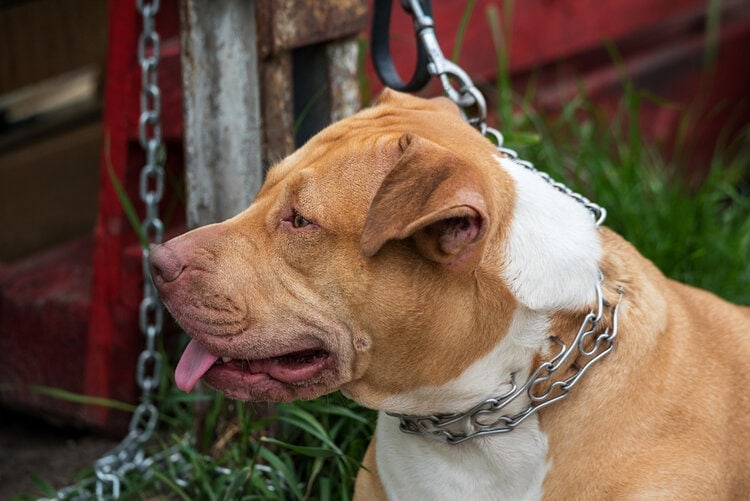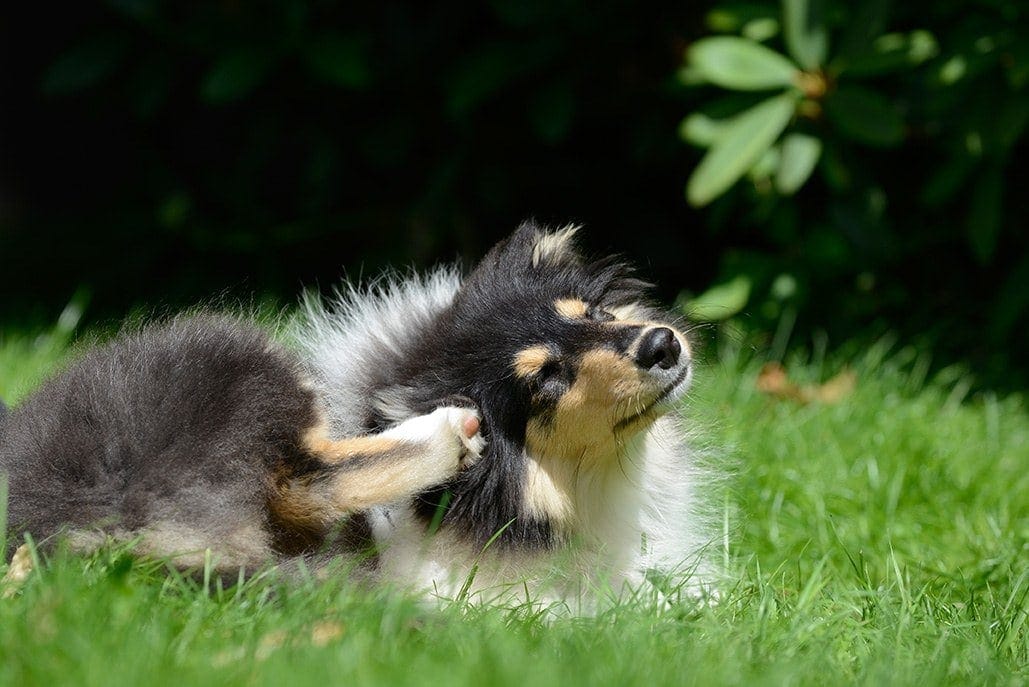When you’re ready to take your dog for a walk or simply need to restrain your dog, you want a collar that’s best suited for their breed and personality. When used properly, the right collar can help train your dog, as well as make going on a walk a safer and more enjoyable experience.
Take one step into a pet store, and you’ll find yourself sorting through a wide variety of collar options, from sturdy harnesses to slip chains. Deciding on the right collar for your dog means taking several factors into account, including your dog’s safety, trainability, and head shape.
In this article, we’ve listed and described the six most common types of collars available. We go over the advantages of each style and their preferred uses, as well as explain certain important humane issues and specific drawbacks you should consider.
The 6 Types of Dog Collars
1. Flat Dog Collar

The most common type of collar, and perhaps what may come to mind first, is the flat collar. With its simple, basic design, the flat collar loops around your dog’s neck and closes with a plastic clasp. These collars typically come with D-rings for attaching identification and important tags.
The flat collar is best suited for well-behaved dogs who do not pull when walking. Simply clip on the leash and be on your way. They are gentle for everyday wear on a dog’s neck, as long as it’s fitted properly. Fortunately, most flat collars come in a variety of sizes and can be adjusted as needed.
If your dog tends to pull, the flat collar will be of little help. Be aware that this collar can fail in two ways. Either it chokes and causes neck strain on your forward-pulling dog or your dog can reverse direction, slip out of the collar, and make an easy escape. Also, excessive pulling with this type of collar can create pressure on your dog’s eyes, which you’ll want to avoid if your dog has glaucoma or a related eye condition.
A final note on safety with flat collars and highly excitable dogs: In worst-case scenarios, some dogs have gotten their mouths caught under a flat collar and suffocated. For this reason, certain flat collars are designed as “break-away” to prevent such accidents.
2. Head Dog Collars or Head Halters

Head collars, also known as head halters, are especially helpful for keeping your dog focused on walking straight ahead. It slips over your dog’s snout and attaches behind the ears. Ideal for gently training your dog to walk without pulling, this style of collar redirects your dog’s attention, as it essentially points your dog’s head in the direction you want to go. By nature, where the head goes, the body follows.
As you walk, you can easily train your dog that a taunt leash means “stop.” The benefit of a head collar or head halter is that eventually, your dog will learn to walk with a loose leash and be less distracted. As a result, this type of collar may have a calming effect on your dog.
Since this collar attaches to the snout, you may initially have difficulty convincing your dog to allow you to put it in place. Many owners have success using treats as an incentive. Once the collar is in use, be aware that it tends to rub the fur on your dog’s face, which may cause irritation. For this reason, your dog may try to remove it by pawing at it or rubbing their face on the ground.
One last important consideration with a head collar: Take care to not harshly jerk your dog’s head around. If your dog suddenly takes off at full speed and comes to the end of the taut leash, the setup of this collar can cause severe injury.
3. Dog Harness

Designed to reduce tension on your dog’s neck, a harness slips around your dog’s front legs and snaps closed behind the upper part of your dog’s back. With a little training, your dog may step into the harness directly. Then you snap it together and clip the leash to either a clip located on the chest or the back. Certain harnesses can give you both options.
If you own a short-nose breed, such as a pug or a Boston terrier, a harness is your best option for restraint. Miniature poodles, who tend to have trachea issues, can also greatly benefit from using a harness over a neck collar.
Keep in mind that without neck tension to act as a deterrent, your dog may pull and lunge more vigorously. Attaching your leash to a front clip harness can allow you to regain control by redirecting your dog’s attention toward you. For even greater control, opt for a harness with a specially designed dual leash that attaches to both the front and back clips simultaneously.
Although you may be avoiding harmful neck tension with a harness, it’s not without its safety concerns. With frequent pulling, your dog’s back may be strained or sustain an injury.
4. Slip Collar or Choke Chain

As your dog pulls, the slipknot design of a slip collar or choke chain tightens around your dog’s neck. The tightening sensation should alert your dog to stop lunging and pulling. As with all neck collars, choking becomes a hazard, and the slip design also creates opportunity for neck and trachea damage. However, with professional training, a slip collar can help your dog walk without tension on the leash.
Slip collars and choke chains are most often used with strong, untrained dogs. These collars prevent dogs who may be a danger to others or themselves from escaping and help them to be better controlled.
5. Martingale Dog Collar

A hybrid between a slip collar and a traditional flat collar, the Martingale allows you to control your dog without causing choking. It has two loops that allow the collar to rest loosely on your dog’s neck when there’s no tension. As your dog pulls forward, the collar tightens, but only to a certain extent. Once your dog relaxes, the collar loosens.
These safer, more comfortable collars are designed to work most effectively on breeds with large necks and small heads, such as whippets and greyhounds. The build of this type of breed allows them to easily slip out of other types of neck collars. However, the layout of the Martingale collar solves this issue.
Even with the collar’s clever design, a dog that continually puts tension on it by constantly pulling and lunging can become susceptible to neck injury.
6. Prong or Pinch Collar

A controversial choice, this variation of a neck collar can either be an effective tool for training difficult dogs or an abusive design that can cause your dog unnecessary pain and neck injury. The prong or pinch collar has metal or rubber tips that dig into — or in some versions, pinch — your dog’s neck in direct relation to the tension on the collar.
As a training tool, the idea is that the pain associated with the poor behavior of pulling will have the desired outcome of deterring your dog. In order to be humanely effective, you’ll need to be especially careful to buy one that is properly fitted with appropriate prong length and sits high on your dog’s neck. Also, you should never yank on this collar when your dog is behaving.
There are similar collars on the market, including citronella spray collars, that emit a spray your dog may find offensive, as well as shock or e-collars that deliver a painful shock. Be aware that not every dog will stop pulling by simply wearing such a collar, and not every owner is properly trained to use these pain-inducing collars correctly and appropriately. The Humane Society has guidelines for proper use and urges owners to either forgo such collars or hire a professional trainer.
Conclusion
Finding the right collar for your dog may take time and consideration. Generally, a well-trained dog will only require a flat collar or a harness. Go for a head collar or a head halter if your dog requires a bit more control as you walk. If you plan to work with a difficult dog with the help of a professional trainer, you may opt for a slip collar or in dire cases, a prong, spray, or e-collar.
Finally, be sure to consider your breed’s body build and health concerns. A harness may not give you as much control, but it does eliminate neck injury and avoid eye pressure issues. A Martingale collar may be the only effective one for your dog’s unique build.
We hope that after reading about these different types of collars, you’ll be able to make a more informed choice. Along with knowing your dog’s training level and particular breed, you’ll be able to decide which collar will work best for your dog.
Featured Image Credit: Mitchell Orr, Unsplash









